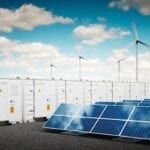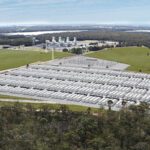With historic wildfires in California and severe winter storms in Texas, electric utilities had little choice but to initiate rolling blackouts to reduce strain on the electric grid, leaving millions of residents stranded without power. These catastrophic events revealed vulnerabilities in our energy infrastructure that must be addressed to meet peak electricity demand as our climate continues to change. Readily available as well as new energy storage technologies are needed for immediate implementation to improve electric grid resiliency, and achieve ambitious state and federal climate goals. For those reasons, research and development (R&D) is the key to unlock, make accurate assessments, and begin deployment of these vital technologies.
For the state of California to make significant progress toward achieving its net-zero carbon goals, all types of clean energy technologies must be considered, including existing and new battery technologies. Battery energy storage systems (BESSs) are a core component of California’s plan to stabilize and harden the electrical grid infrastructure by delivering stored energy to supplement renewable sources during peak demand periods. There are different battery chemistries that can serve this purpose, each of which has its own advantages and disadvantages, and this is why R&D is crucial in providing realistic evaluation and future pathways for different battery technologies. There is not one ideal battery chemistry that can meet the multitude of demands for future energy needs. Rather than trying to pick winners and losers, the state of California should facilitate R&D to determine which solutions are best suited to specific energy needs.
While the performance profile of a technology will determine its suitability for a given application, the sustainability of a technology will determine its overall environmental impact. Some newer battery chemistries, such as lithium-ion batteries, have struggled with sustainability and supply chain resilience, being significantly reliant on minerals mined in overseas regions. Robust and reliable recycling could help lessen those issues, but current estimates indicate lithium-ion batteries are collected and recycled at a rate of 15% or less, with the remainder being sent to landfills. Efforts are underway to overcome infrastructure and market impediments but will take time and significant investments.
The state of California should prioritize the adoption and R&D of energy storage technologies that are sustainable, highly recyclable, do not rely on foreign resources, and contribute to a domestic industry capable of addressing high demand. For example, the lead battery industry includes companies that are among the 16% of U.S. businesses that have implemented a circular economic model, according to an ING survey. This industry developed a closed-loop system that has achieved a 99% recycling rate, keeping more than 130 million lead batteries from landfills each year. Moreover, new lead battery units are typically comprised of more than 80% recycled material. On the other hand, disposal of hazardous waste from existing energy sources, such as nuclear, has been causing major issues that go beyond environmental impact.
California policymakers should take advantage of the state’s home-grown resources, including Greentech companies on the cutting edge of research, academic and research institutions that are world renowned, and a workforce that is trained to support a manufacturing hub for green products. R&D initiatives for advanced lead battery technology are already underway in California through the Advanced Power and Energy Program (APEP); the recently established Horiba Institute for Mobility and Connectivity (HIMaC2) at the University of California, Irvine; and the industry-academic partnership between University of California, Los Angeles and the Consortium for Battery Innovation, among others. With the proper funding, we can help move California and the country into a global leadership role for the next generation of batteries for electric grid service.
Technology development is the art of the possible by tackling what is believed to be impossible. To meet California’s climate goals and remain its leader in green technology, our state needs government, industry, and academia to work together toward a common purpose.
—Vojislav Stamenkovic is the inaugural director of the Horiba Institute at the University of California, Irvine.









